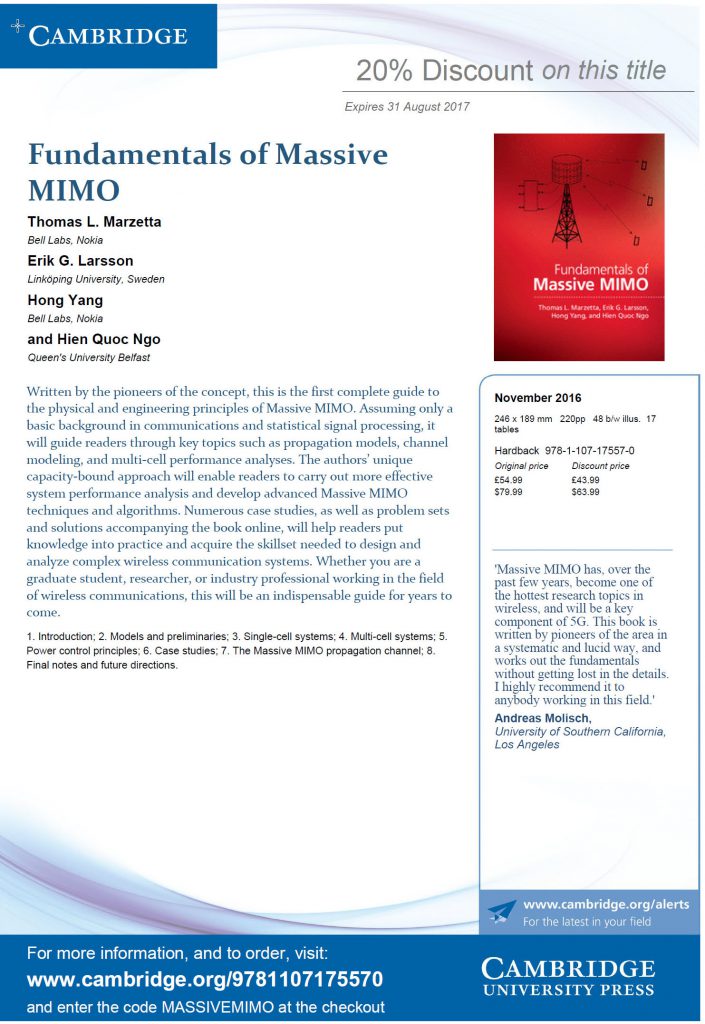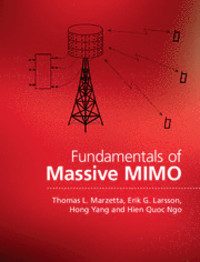If you want to learn about signal processing foundations for Massive MIMO and mmWave communications, you should attend the
2017 Joint IEEE SPS and EURASIP Summer School on Signal Processing for 5G
Signal processing is at the core of the emerging fifth generation (5G) cellular communication systems, which will bring revolutionary changes to the physical layer. Unlike other 5G events, the objective of this summer school is to teach the main physical-layer techniques for 5G from a signal-processing perspective. The lectures will provide a background on the 5G wireless communication concepts and their formulation from a signal processing perspective. Emphasis will be placed on showing specifically how cutting-edge signal processing techniques can and will be applied to 5G. Keynote speeches by leading researchers from Ericsson, Huawei, China Mobile, and Volvo complement the technical lectures.
The summer school covers the following specific topics:
- Massive MIMO communication in TDD and FDD
- mmWave communications and compressed sensing
- mmWave positioning
- Wireless access for massive machine-type communications
The school takes place in Gothenburg, Sweden, from May 29th to June 1st, in the week after ICC in Paris.
This event belongs to the successful series of IEEE SPS and EURASIP Seasonal Schools in Signal Processing. The 2017 edition is jointly organized by Chalmers University of Technology, Linköping University, The University of Texas at Austin, Aalborg University and the University of Vigo.
Registration is now open. A limited number of student travel grants will be available.
For more information and detailed program, see: http://www.sp-for-5g.com/


 I regularly get the question “are there any Massive MIMO books?”. So far my answer has always been “no”, but now I can finally give a positive answer.
I regularly get the question “are there any Massive MIMO books?”. So far my answer has always been “no”, but now I can finally give a positive answer.